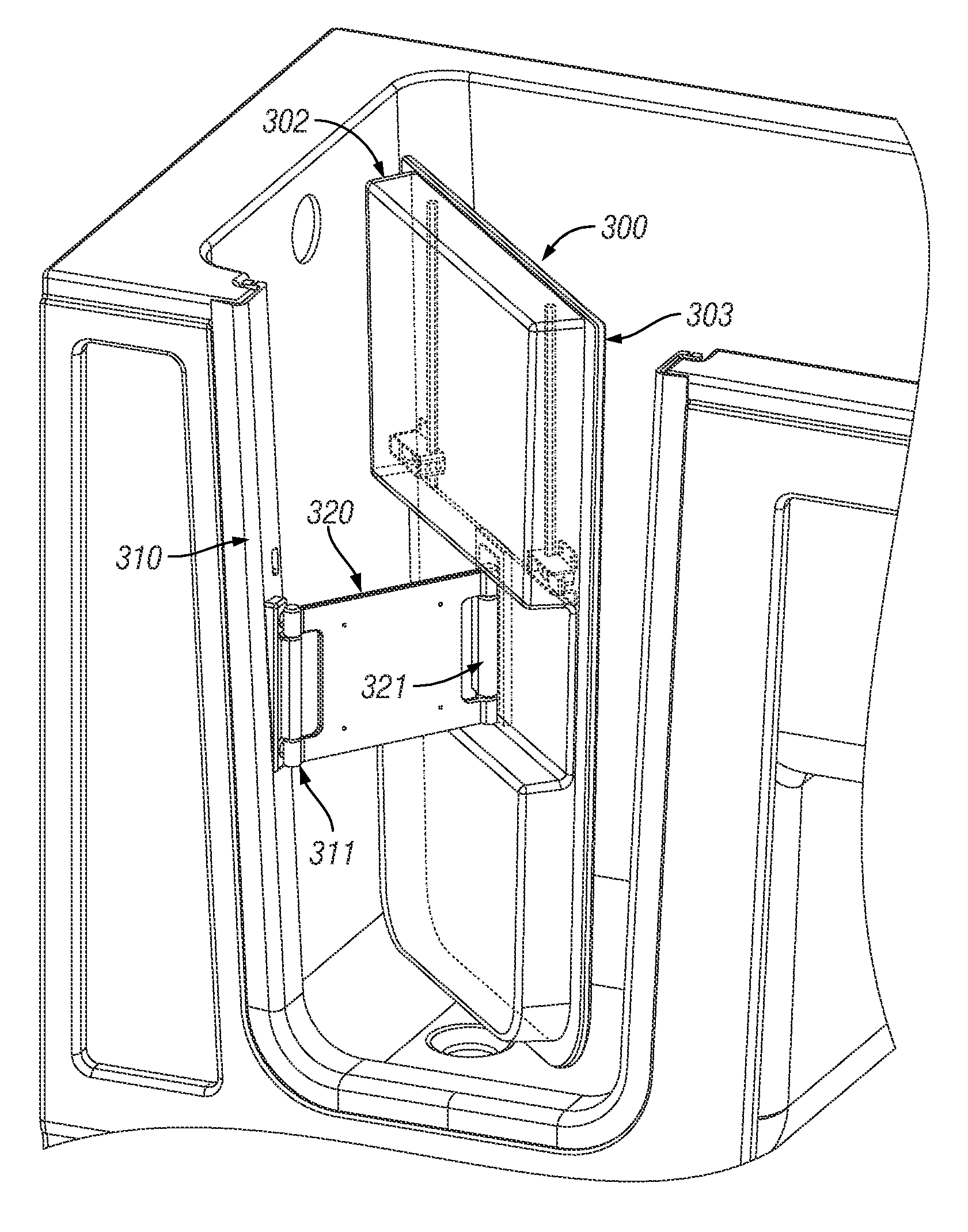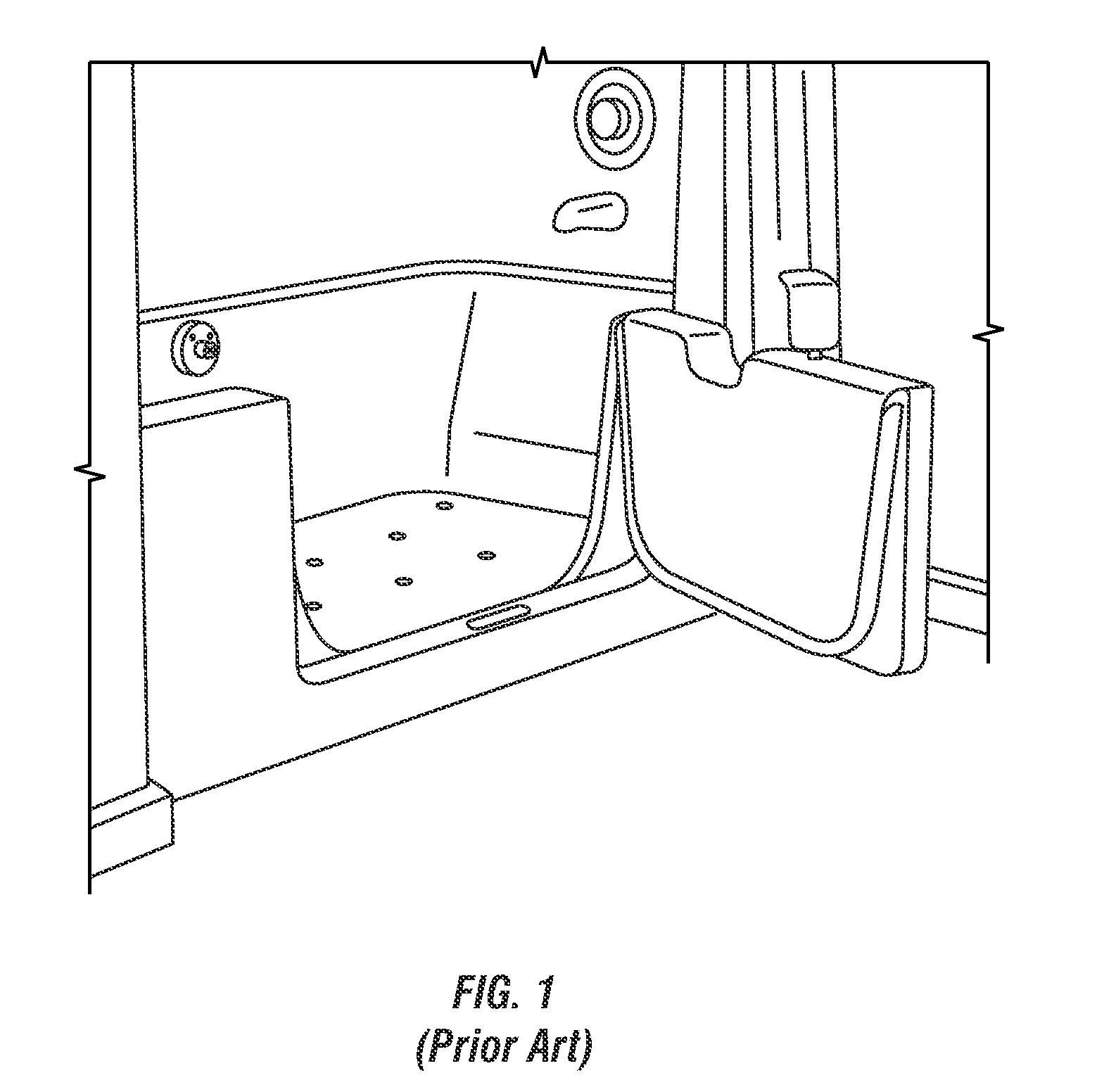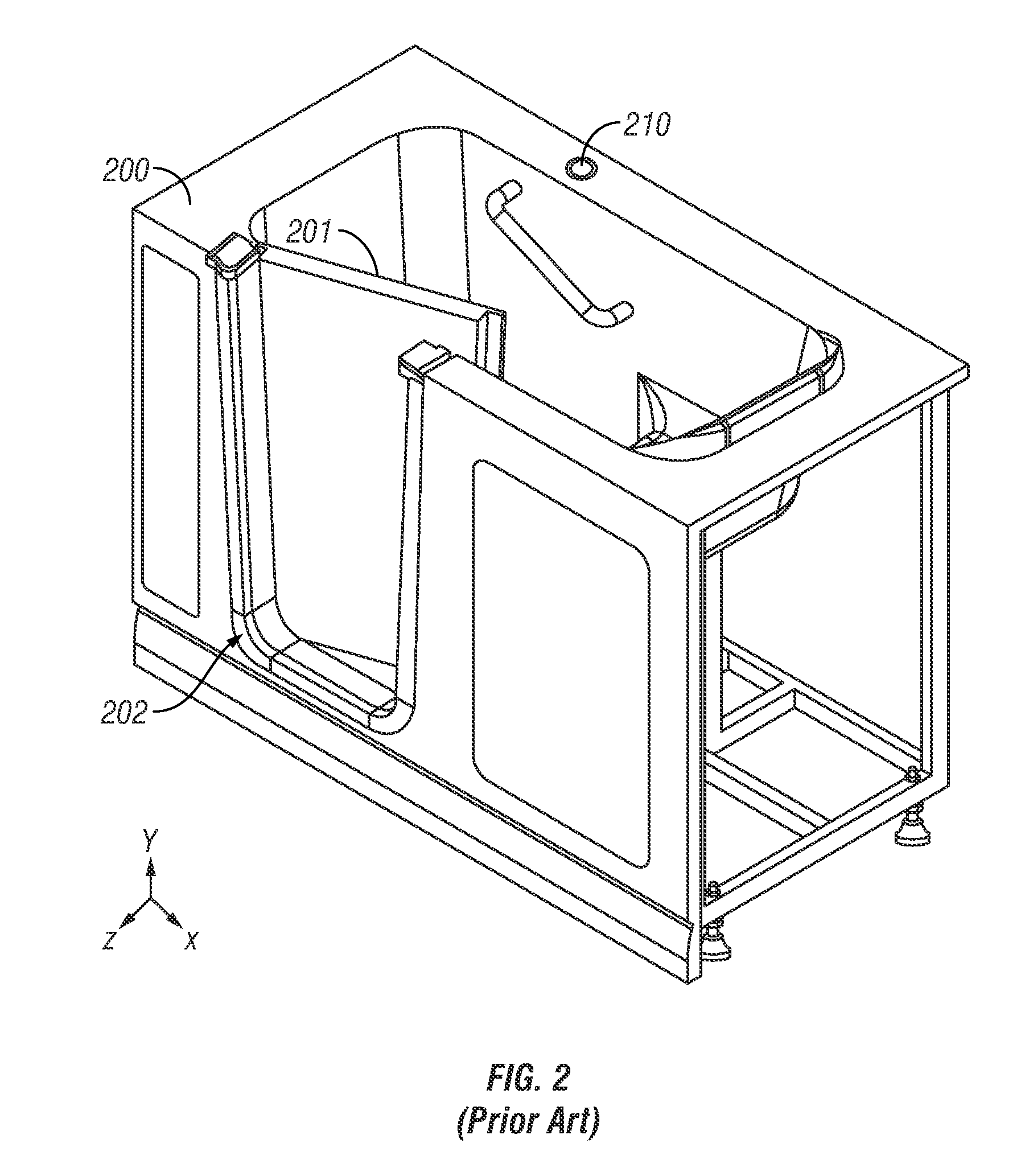Door assembly for walk-in bathtub
a technology for bathtubs and doors, applied in the field of door and hinge systems, can solve the problems of physical disabilities, reduced strength, balance and range of motion that are typically affecting the operation of the tub and its ease of use, and achieve the effect of improving the safety and convenience of us
- Summary
- Abstract
- Description
- Claims
- Application Information
AI Technical Summary
Problems solved by technology
Method used
Image
Examples
Embodiment Construction
[0021]FIGS. 3A-3C show a perspective view of a lever hinged side door for a walk-in bath tub in accordance with a preferred embodiment of the present invention. FIGS. 3A-3C illustrate the manner in which the side door opens. Similarly, FIGS. 4A-4C show a top plan view of the lever hinged side door.
[0022]In the example shown, the lever hinged door 300 is mounted to a door frame 310 similar to the one shown in FIG. 2. However, it should be mentioned that the present invention can also be used with walk-in tubs that do not utilize a door frame around the threshold.
[0023]Unlike prior art designs, the door 300 in the present invention does not hinge directly on the door threshold. Instead, the door 300 is connected to the frame 310 by an intermediate double axis hinge 320. It is this double axis hinge 320 that is connected to the door frame 310 via a first hinge axis mount 311. The other end of the hinge 320 connects to approximately the middle of the door 300 by means of a second hinge ...
PUM
 Login to View More
Login to View More Abstract
Description
Claims
Application Information
 Login to View More
Login to View More - R&D
- Intellectual Property
- Life Sciences
- Materials
- Tech Scout
- Unparalleled Data Quality
- Higher Quality Content
- 60% Fewer Hallucinations
Browse by: Latest US Patents, China's latest patents, Technical Efficacy Thesaurus, Application Domain, Technology Topic, Popular Technical Reports.
© 2025 PatSnap. All rights reserved.Legal|Privacy policy|Modern Slavery Act Transparency Statement|Sitemap|About US| Contact US: help@patsnap.com



